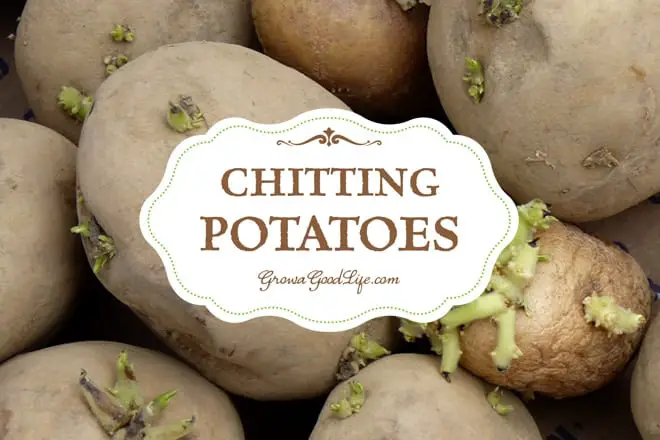Potatoes, known for their versatility and popularity, have long been a staple in many cuisines. When it comes to planting these starchy tubers, a common question arises: do potatoes need to sprout before they can be planted? This article explores the importance of sprouting potatoes before planting and the reasons behind this practice. By understanding the science behind potato sprouting, gardeners and farmers alike can ensure optimal growth and yield when cultivating these beloved crops.
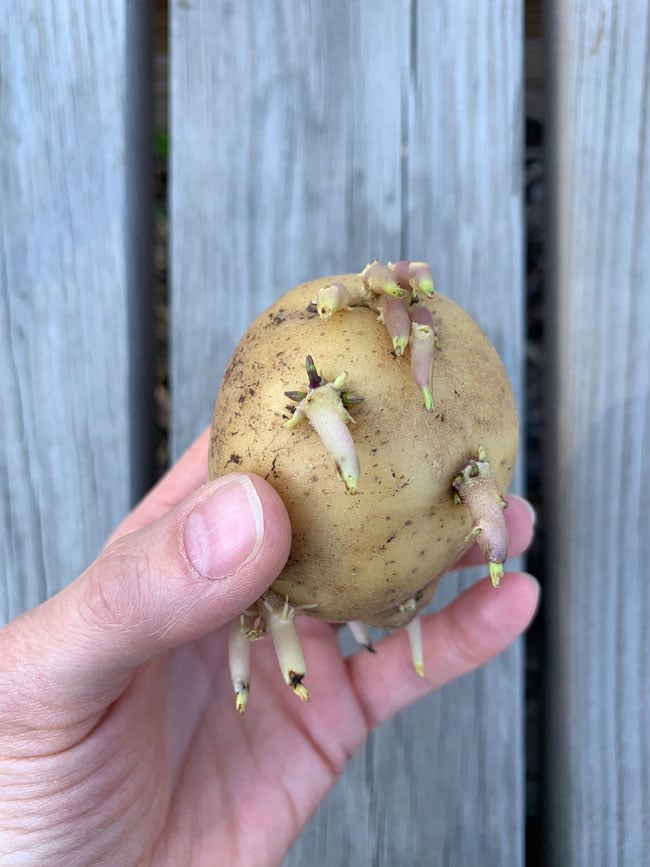
Benefits of Sprouting Potatoes Before Planting
Increased Yield
One of the main benefits of sprouting potatoes before planting is the potential for increased yield. When potatoes are allowed to sprout before being planted, they develop a larger, more robust root system. This enables the plants to take up more water and nutrients from the soil, leading to healthier and more productive potato plants. A larger root system also helps the plants anchor themselves in the soil, reducing the risk of wind damage or uprooting.
Faster Growth
Another advantage of sprouting potatoes before planting is the potential for faster growth. When potatoes are sprouted prior to planting, they have a head start in terms of root development. This allows them to establish themselves more quickly once they are planted in the ground. As a result, sprouted potatoes are more likely to produce foliage and flowers earlier in the growing season, leading to a shorter time to harvest.
Healthy Start
Sprouting potatoes before planting also gives them a healthier start in life. During the sprouting process, the potatoes begin to break down their stored starches and convert them into usable sugars. This not only provides the fuel needed for early growth but also makes the potatoes more resistant to diseases and pests. Additionally, sprouting potatoes allows any dormant pathogens or pests to become visible, making it easier to identify and remove any infected or infested tubers before planting.
Early Harvest
Finally, sprouting potatoes before planting can lead to an early harvest. By starting the sprouting process indoors or in a controlled environment, gardeners can get a head start on the growing season. This is particularly advantageous for regions with shorter growing seasons or for gardeners who want to harvest potatoes as early as possible. Early harvests not only allow for earlier enjoyment of fresh potatoes but also increase the window of time for planting subsequent crops or preparing the soil for other purposes.
How to Choose Potatoes for Sprouting
Selecting the Right Variety
When choosing potatoes for sprouting, it is important to select the right variety. Some varieties of potatoes are more suitable for sprouting than others. Look for varieties that are known for their consistent and vigorous sprouting, such as Yukon Gold, Russet, or Kennebec. These varieties tend to have a high germination rate and produce strong, healthy sprouts.
Inspecting Potatoes for Quality
Before sprouting, it is crucial to inspect the potatoes for quality. Look for potatoes that are firm, with smooth skin and no signs of rot or damage. Avoid potatoes that have soft spots, bruising, or visible signs of disease or pests. It is also important to choose potatoes that are not currently sprouting, as they may not develop strong sprouts or could be more susceptible to disease.
Avoiding Injured or Diseased Potatoes
Injured or diseased potatoes should be avoided when selecting potatoes for sprouting. These potatoes may not develop healthy sprouts or could introduce pathogens or pests to the planting area. Look out for potatoes with cuts, scars, or wounds, as well as those with signs of disease such as black spots, blemishes, or discoloration. It is best to discard any potatoes that show signs of injury or disease to ensure a successful sprouting and planting process.
Determining Seed Potatoes
When selecting potatoes for sprouting, consider using certified seed potatoes. Certified seed potatoes have been inspected for quality and have met certain standards for disease and pest control. They are less likely to carry diseases or pests that can affect the sprouting process or the overall health of the potato plants. Using certified seed potatoes can provide peace of mind and increase the chances of successful sprouting and a bountiful harvest.
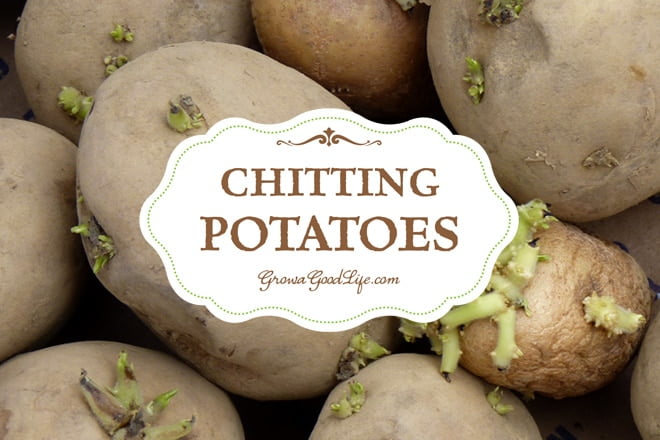
Methods to Sprout Potatoes
Using Natural Light
One common method for sprouting potatoes is to use natural light. To sprout potatoes using natural light, place the potatoes in a cool, dry location with access to indirect sunlight. Avoid exposing the potatoes to direct sunlight, as this can cause them to overheat and dry out. It is important to provide proper ventilation to prevent moisture buildup around the potatoes, as excessive moisture can lead to rotting or the development of mold.
Using Artificial Light
If natural light is not readily available or is insufficient, artificial light can be used to sprout potatoes. This method involves placing the potatoes in a cool, well-ventilated area and providing them with a source of artificial light. LED grow lights or fluorescent lights are commonly used for this purpose, as they provide the right spectrum and intensity of light for optimal sprouting. It is important to position the lights at the appropriate distance from the potatoes to prevent overheating or burning.
Preparing Sprouting Containers
When sprouting potatoes, it is essential to use suitable containers. Choose containers that provide adequate drainage to prevent waterlogging. Plastic trays or shallow containers with drainage holes are ideal for sprouting potatoes. Fill the containers with a loose, well-draining medium such as potting soil, coconut coir, or a mixture of peat moss and perlite. Ensure that the containers are clean and free of any debris or contaminants that could hinder sprouting or promote disease.
Providing Optimal Temperature and Humidity
To promote successful sprouting, it is crucial to provide the potatoes with optimal temperature and humidity conditions. Potatoes typically sprout best at temperatures between 45 and 60 degrees Fahrenheit (7 to 15 degrees Celsius). Higher temperatures can lead to rapid, weak sprout growth, while lower temperatures can slow down or inhibit sprouting. Aim for a humidity level of around 80 percent, as this helps prevent the potatoes from drying out and promotes healthy sprout development.
Avoiding Excessive Sprouting
While sprouting potatoes is beneficial, it is important to avoid excessive sprouting. Too much sprouting can lead to weak, elongated sprouts that are more prone to damage during planting. You can control the degree of sprouting by adjusting the temperature and light conditions. Cooler temperatures and limited exposure to light can slow down the sprouting process, while warmer temperatures and increased light exposure can promote faster sprouting. Finding the right balance will help ensure healthy, sturdy sprouts for planting.
When to Start Sprouting Potatoes
Choosing Appropriate Timing
To determine when to start sprouting potatoes, it is crucial to consider the appropriate timing for your specific region and growing conditions. Generally, potatoes should be sprouted a few weeks before the estimated last frost date in your area. This allows for sufficient sprouting and growth before the planting season begins. To find the estimated last frost date, consult local gardening resources or use online tools that provide frost date information based on your location.
Considering Local Climate
In addition to the estimated last frost date, it is essential to consider your local climate when deciding when to start sprouting potatoes. Different potato varieties have different temperature requirements for optimal sprouting and growth. Some varieties may require warmer temperatures to sprout successfully, while others may prefer cooler conditions. Research the specific temperature preferences of the potato variety you are growing and adjust the sprouting schedule accordingly.
Avoiding Frost Conditions
One of the crucial factors to consider when sprouting potatoes is to avoid frost conditions. Even if the estimated last frost date has passed, unexpected frost events can still occur, especially in regions with unpredictable weather patterns. Frost can damage or kill potato sprouts, leading to reduced yields or failed crops. Monitor weather forecasts and be prepared to protect the sprouted potatoes if frost is predicted. Covering the sprouts with row covers, blankets, or plastic sheets can provide temporary protection.
Aligning with Planting Date
When deciding when to start sprouting potatoes, it is important to align the sprouting schedule with the planting date. The sprouts should be well-developed and ready for planting by the time the soil is warm enough and the risk of frost has passed. In general, sprouted potatoes are usually ready for planting when the sprouts are about 0.5 to 1 inch (1.3 to 2.5 centimeters) long. This ensures that the sprouts have enough energy and vigor to establish themselves in the soil and continue growing.
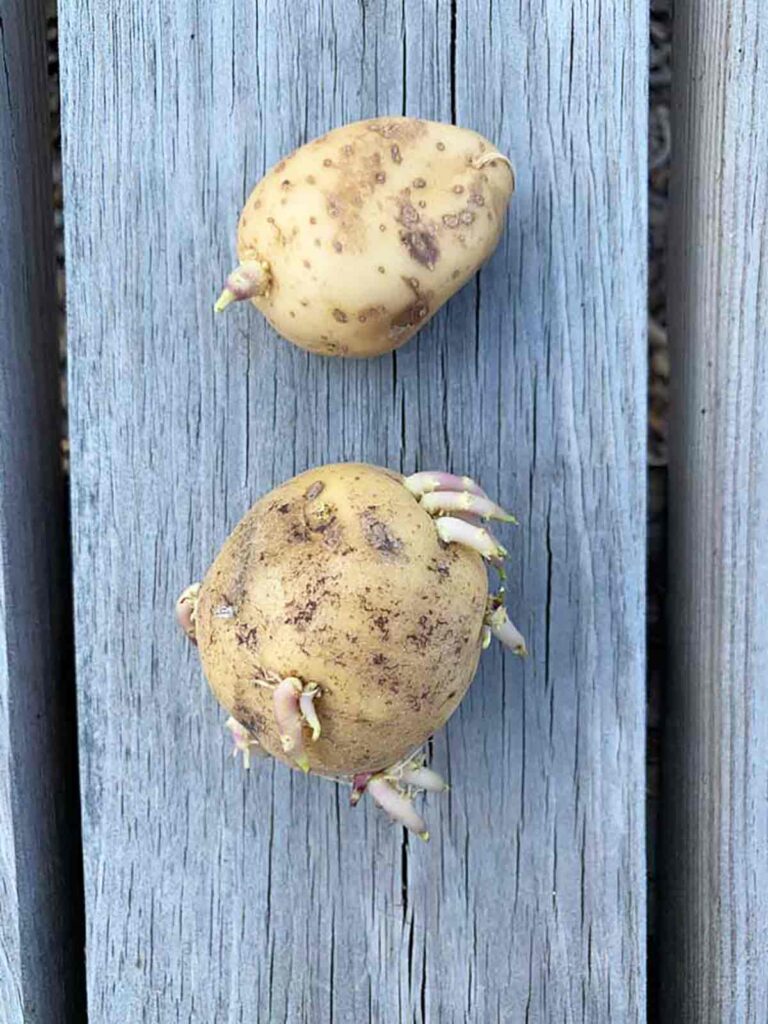
Signs of Sprouting Readiness
Eyes and Buds Formation
One of the first signs that potatoes are ready for planting is the formation of eyes and buds. Eyes are the small depressions or indentations on the surface of the potato, from which sprouts emerge. Buds are the small bumps or elevated areas within the eyes, indicating the development of potential sprouts. Once the eyes and buds become prominent and show signs of growth, the potatoes are likely ready for planting.
Emergence of Short Shoots
As the sprouting process continues, short shoots will begin to emerge from the eyes of the potatoes. These shoots are the early stages of the sprouts that will grow into foliage once planted. The emergence of short shoots indicates that the potatoes have reached an advanced stage of sprouting readiness and can be confidently planted in the garden or containers.
Presence of Small Sprouts
Once the sprouts develop further, they will grow into small, green sprouts. These sprouts should be firm and healthy-looking, with a vivid green color. The presence of small sprouts on the potatoes indicates that the sprouting process has been successful and the potatoes are ready for planting. At this stage, it is important to handle the sprouted potatoes with care to avoid damaging the delicate sprouts.
Tolerating Slight Sprouting Variations
It is important to note that slight variations in sprouting readiness are acceptable when planting potatoes. Not all the sprouts need to be the same length, and some sprouts may be slightly shorter or longer than others. As long as the majority of the sprouts are well-developed and robust, the potatoes can be planted with confidence. Tolerating slight sprouting variations allows for flexibility in the sprouting and planting process and does not significantly impact the overall harvest.
Planting Sprouted Potatoes
Preparing the Soil
Before planting sprouted potatoes, it is crucial to prepare the soil properly. Potatoes prefer loose, well-draining soil that is rich in organic matter. Begin by removing any weeds or debris from the planting area. Loosen the soil with a garden fork or tiller to a depth of 8 to 10 inches (20 to 25 centimeters). Incorporate compost or well-rotted manure into the soil to improve its fertility and texture. Smooth and level the soil surface to create a suitable planting bed for the sprouted potatoes.
Determining Planting Depth
When planting sprouted potatoes, it is important to determine the appropriate planting depth. Ideally, the sprouts should be buried about 4 to 6 inches (10 to 15 centimeters) deep. This depth allows for sufficient soil coverage to protect the sprouts while still allowing them to emerge and reach the surface. Planting too shallowly can expose the sprouts to drying or damage, while planting too deeply can delay emergence and hinder growth.
Spacing Sprouted Potatoes
Proper spacing is essential when planting sprouted potatoes. Space the potatoes approximately 12 to 15 inches (30 to 38 centimeters) apart, with rows spaced about 2 to 3 feet (60 to 90 centimeters) apart. This wide spacing provides the potato plants with ample room to grow and spread. It also ensures good air circulation, which helps prevent disease and promotes healthy foliage development. Avoid overcrowding, as tightly packed plants can compete for resources and yield smaller tubers.
Planting Techniques and Tips
When planting sprouted potatoes, there are a few techniques and tips to keep in mind. Place the sprouted potatoes carefully into the planting holes or trenches, ensuring that the sprouts are facing upwards. Gently cover the potatoes with soil, ensuring that they are well-buried but not too deeply. Water the newly planted potatoes thoroughly to settle the soil and establish good soil-to-root contact. Mulching the potato plants with straw or organic mulch can help conserve soil moisture and suppress weed growth.
Protecting from Pests and Diseases
To protect sprouted potatoes from pests and diseases, it is important to take preventive measures at the time of planting. One common practice is to apply a layer of organic insecticide or fungicide powder on the sprouts and tubers before planting. This helps deter pests and prevent the spread of soilborne diseases. Additionally, erecting a physical barrier such as a row cover or fence around the potato plants can protect them from pests like rabbits or deer.
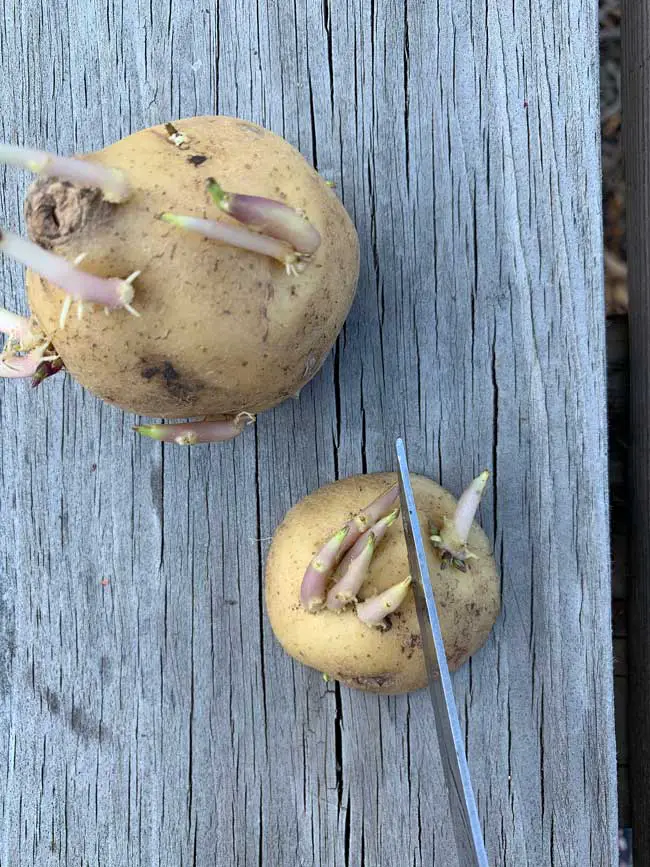
Alternatives to Sprouting Potatoes
Planting Whole Potatoes
One alternative to sprouting potatoes is to plant them whole, without any sprouting. This method is suitable for early and mid-season potato varieties that have a naturally higher sprouting tendency. Whole potatoes can be planted directly into the ground or containers without the need for sprouting in advance. While this method may be more convenient, it may result in slower initial growth and a longer time to harvest compared to sprouted potatoes.
Using Cut Seed Potatoes
Another alternative is to use cut seed potatoes. Cut seed potatoes are whole potatoes that have been cut into smaller pieces, with each piece containing at least one sprout or “eye.” This method allows for the propagation of multiple potato plants from a single potato. However, it is important to ensure that the cut seed potatoes have properly calloused before planting to minimize the risk of rotting or disease. Cut seed potatoes may also require additional time to establish and develop compared to sprouted potatoes.
Directly Planting Small Potatoes
For small varieties of potatoes or those with early maturity, another alternative is to directly plant small potatoes without any sprouting or cutting. These small potatoes can be planted as-is and will develop their own sprouts once in the ground. This method is particularly useful when growing new or specialty potato varieties that may not be readily available as certified seed potatoes. However, keep in mind that direct planting of small potatoes may result in a slightly lower overall yield compared to sprouted or cut seed potatoes.
Understanding Risks and Limitations
While alternatives to sprouting potatoes exist, it is important to understand the risks and limitations associated with each method. Planting whole potatoes may lead to uneven sprouting or slower initial growth. Using cut seed potatoes increases the risk of diseases or rotting if not properly calloused. Directly planting small potatoes may result in a slightly lower yield. Consider the specific needs of your potato variety, the available resources, and the desired outcome when choosing an alternative to sprouting.
Common Mistakes in Sprouting Potatoes
Over/Under Sprouting
One common mistake when sprouting potatoes is either over-sprouting or under-sprouting. Over-sprouting refers to allowing the potatoes to develop excessively long sprouts, which can make them more vulnerable to damage during planting. Under-sprouting, on the other hand, involves planting potatoes with weak or insufficient sprouts, leading to slower growth or failure to establish. Finding the right balance in sprouting length and vigor is key to successful potato planting.
Neglecting to Harden Off
Harden off refers to the process of acclimating plants to outdoor conditions gradually. Neglecting to harden off sprouted potatoes can result in shock or damage when they are abruptly exposed to the elements. To avoid this mistake, gradually expose the sprouted potatoes to outdoor conditions by placing them outside for a few hours each day, gradually increasing the duration. Harden off over the course of a week or two before planting to ensure a smooth transition and optimal plant performance.
Exposing to Excessive Light or Temperature
Excessive light or temperature exposure can harm sprouted potatoes. Prolonged exposure to direct sunlight can cause the potatoes to overheat and dry out. Likewise, very high temperatures can lead to weak or elongated sprouts. To prevent these issues, provide the sprouted potatoes with indirect light and maintain temperatures within the optimal range. Monitoring light and temperature conditions and adjusting as needed will help ensure healthy, vigorous sprouts.
Using Poor Quality Seed Potatoes
Using poor quality seed potatoes is another common mistake in sprouting. Low-quality seed potatoes may carry diseases, pests, or other issues that can negatively impact sprouting success and plant health. Always choose certified seed potatoes whenever possible, as they have been carefully inspected and are less likely to have these problems. If using homegrown potatoes, select those that are disease-free, firm, and healthy. Investing in high-quality seed potatoes reduces the risk of poor sprouting or failed crops.
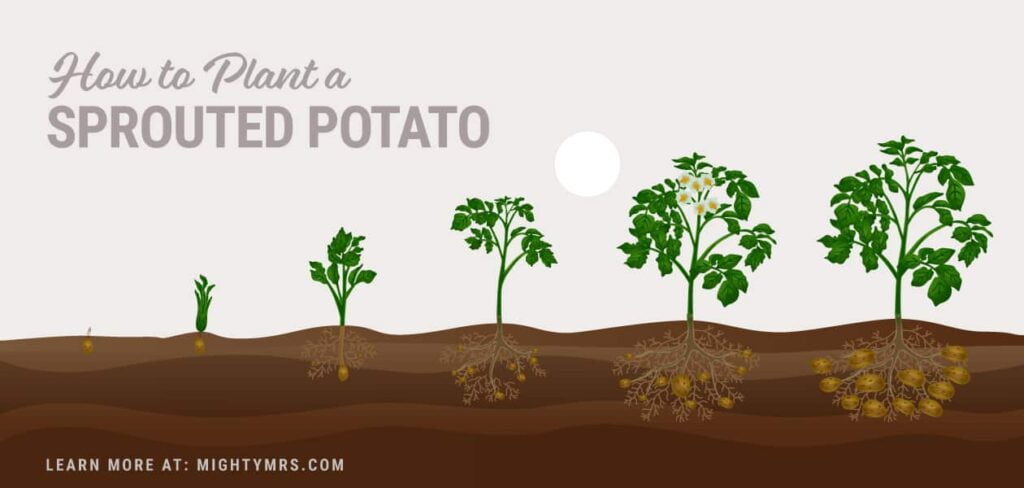
Sprouting Potatoes Indoors vs. Outdoors
Advantages of Indoor Sprouting
Indoor sprouting offers several advantages over outdoor sprouting. One key advantage is the ability to control the environmental conditions, such as temperature and light. Indoor sprouting allows for a more controlled and consistent sprouting process, resulting in more uniform and successful sprouts. Additionally, starting the sprouting process indoors can extend the growing season, particularly in regions with shorter growing seasons or unpredictable weather. Indoor sprouting also provides protection from pests, diseases, and adverse weather conditions.
Advantages of Outdoor Sprouting
While indoor sprouting has its advantages, outdoor sprouting also offers benefits. Outdoor sprouting allows the potatoes to acclimate to the natural environmental conditions from the start, reducing the risk of transplant shock. It is a more natural and straightforward method that requires less setup and maintenance compared to indoor sprouting. Outdoor sprouting can also be beneficial for gardeners who have limited indoor space or prefer a more hands-off approach to sprouting.
Considerations for Space and Environmental Factors
When deciding whether to sprout potatoes indoors or outdoors, consider your available space and environmental factors. If you have ample indoor space, particularly areas with access to natural or artificial light, indoor sprouting may be more suitable. However, if space is limited or you prefer a more hands-off approach, outdoor sprouting may be a better option. Consider the average climate in your region, the availability of outdoor space, and your personal preferences when making this decision.
Conclusion
Sprouting potatoes before planting offers numerous benefits, including increased yield, faster growth, a healthy start, and the potential for an early harvest. When selecting potatoes for sprouting, choose the right variety and ensure they are of high quality, free from injuries or diseases. Sprouting potatoes can be done using natural or artificial light, but it is crucial to provide the right temperature, humidity, and avoid excessive sprouting. Consider local climate, timing, and signs of sprouting readiness to determine the optimal time for planting. When planting sprouted potatoes, prepare the soil properly, determine the appropriate planting depth and spacing, and take measures to protect against pests and diseases. While there are alternatives to sprouting potatoes, each method comes with its own risks and limitations. Avoid common mistakes such as over/under sprouting, neglecting to harden off, exposing to excessive light or temperature, or using poor quality seed potatoes. When deciding between indoor and outdoor sprouting, consider the advantages of each method and take into account space and environmental factors. With careful planning and proper execution, sprouting potatoes can lead to a successful and rewarding potato-growing experience.
